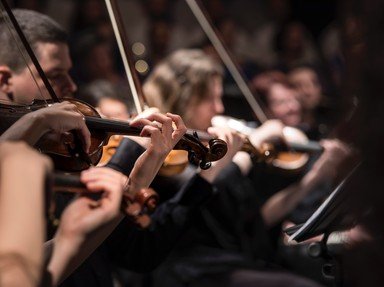Quiz Answer Key and Fun Facts
1. This devout Baroque German organist and first of the traditional Three B's wrote "Jesu, Joy of Man's Desiring", the "Brandenburg Concertos", "Toccata and Fugue in D Minor", and a host of minuets, preludes, etc.
2. A deaf and moody musical genius bridged the Classical and Romantic periods.
The 2nd of the traditional Three B's wrote "Für Elise" and many piano sonatas. His Fifth Symphony is the most ubiquitous in popular culture, but the Ninth defined the compact disc (CD).
3. This solidly Romantic composer, traditionally the third of the Three B's, wrote "21 Hungarian Dances", "Four Serious Songs", and one very famous lullaby.
4. This French Romantic composer's program symphony "Symphonie Fantastique" and the dramatic symphony "Roméo et Juilette" were hits, but his first opera "Benvenuto Cellini" was a dud.
5. Another French composer of the Romantic period, he's best known for the popular opera "Carmen" though he would never know how beloved it would become.
6. One of Hungary's greatest composers (besides Liszt), he almost single-handedly rescued Hungarian folk music from obscurity/extinction.
7. Our only lady composer is also our only Impressionist. Her life & fame cut short, this child prodigy belongs with the big boys for her cantata and her use of harmony.
8. His forlorn, heartbreaking "Adagio for Strings" (1936) was used to mourn two U.S. Presidents and posthumously to score the Vietnam War movie "Platoon" (1986).
9. This 20th-century English composer is noted for his operas, but his "Young Person's Guide to the Orchestra" (1945) is a music educators' favorite.
10. He composed much more than "West Side Story" (1957), and he conducted the New York Philharmonic. Need we say more?
Source: Author
gracious1
This quiz was reviewed by FunTrivia editor
agony before going online.
Any errors found in FunTrivia content are routinely corrected through our feedback system.
